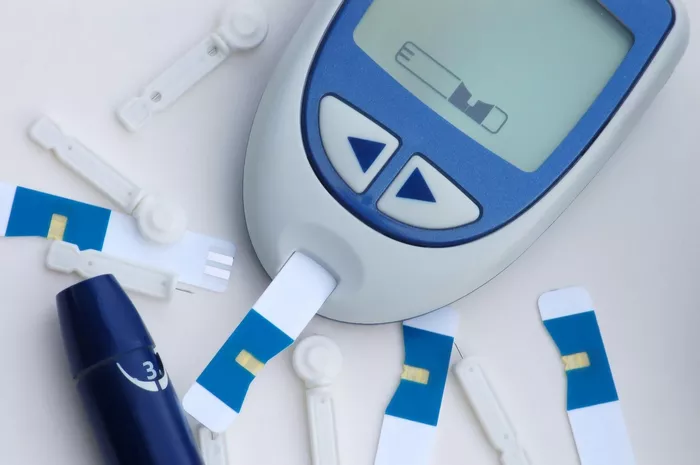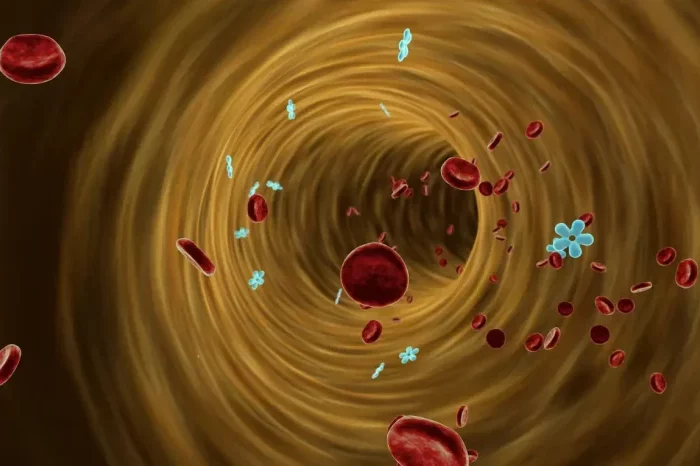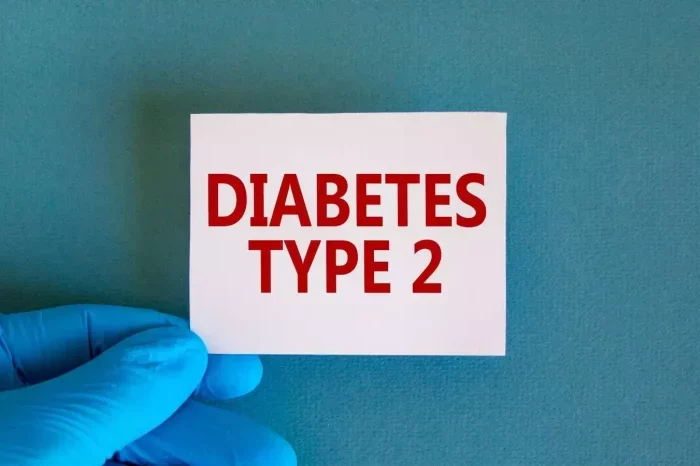Diabetes is a chronic condition that affects millions of people worldwide. It occurs when the body either cannot produce enough insulin or cannot effectively use the insulin it produces, leading to high levels of sugar in the blood. While diabetes can develop gradually over time, there are often early warning signs that indicate the presence of the condition. Recognizing these signs and seeking prompt medical attention can help individuals manage their diabetes effectively and prevent complications. In this article, we will explore some of the early warning signs of diabetes and discuss why early detection is crucial for effective management.
Understanding Diabetes: Types and Risk Factors
Before delving into the early warning signs of diabetes, it’s essential to understand the different types of diabetes and the risk factors associated with the condition.
There are three main types of diabetes:
Type 1 Diabetes: This type of diabetes occurs when the immune system mistakenly attacks and destroys the insulin-producing cells in the pancreas. As a result, the body cannot produce enough insulin to regulate blood sugar levels effectively. Type 1 diabetes is usually diagnosed in children and young adults, although it can develop at any age.
Type 2 Diabetes: Type 2 diabetes occurs when the body becomes resistant to insulin or does not produce enough insulin to meet its needs. This type of diabetes is more common and is often associated with lifestyle factors such as obesity, lack of physical activity, and poor diet. Type 2 diabetes can develop at any age, but it is more prevalent in adults.
Gestational Diabetes: Gestational diabetes occurs during pregnancy when the body cannot produce enough insulin to meet the increased demands of pregnancy. While gestational diabetes typically resolves after childbirth, women who develop gestational diabetes are at an increased risk of developing type 2 diabetes later in life.
In addition to these types of diabetes, there are several risk factors that can increase a person’s likelihood of developing the condition. These risk factors include:
Family history of diabetes
Being overweight or obese
Sedentary lifestyle
Unhealthy diet high in processed foods and sugar
High blood pressure
High cholesterol levels
Ethnicity (certain ethnic groups, such as African Americans, Hispanic/Latino Americans, and Native Americans, are at higher risk)
Early Warning Signs of Diabetes
While the symptoms of diabetes can vary depending on the type and individual factors, there are several common early warning signs that may indicate the presence of the condition. It’s important to note that not everyone with diabetes will experience these symptoms, and some individuals may not have any symptoms at all. However, recognizing these signs and seeking medical evaluation can lead to early diagnosis and treatment, which is essential for preventing complications. Here are some of the early warning signs of diabetes:
Frequent Urination (Polyuria): One of the hallmark symptoms of diabetes is frequent urination, also known as polyuria. When blood sugar levels are high, the kidneys work to remove the excess sugar by producing more urine. As a result, individuals with diabetes may find themselves needing to urinate more often, especially at night. This symptom is particularly common in type 1 diabetes but can also occur in type 2 diabetes.
Increased Thirst (Polydipsia): Along with frequent urination, increased thirst, or polydipsia, is another common early sign of diabetes. As the body loses more fluids through urination, it can lead to dehydration, causing individuals to feel thirsty more often. Despite drinking more fluids, people with diabetes may still feel thirsty, as their bodies struggle to maintain adequate hydration.
Unexplained Weight Loss: Sudden and unexplained weight loss can be a sign of both type 1 and type 2 diabetes. When the body cannot use glucose for energy due to a lack of insulin or insulin resistance, it begins to break down fat and muscle tissue for fuel, leading to weight loss. This weight loss may occur even if a person is eating more than usual, making it an important warning sign to watch for.
Increased Hunger (Polyphagia): Despite experiencing weight loss, individuals with diabetes may also feel hungrier than usual, a condition known as polyphagia. When cells are unable to receive adequate glucose for energy, the body may signal hunger to try to obtain more fuel. As a result, people with diabetes may experience intense cravings and increased appetite, especially after meals.
Fatigue and Weakness: Diabetes can cause feelings of fatigue and weakness due to the body’s inability to effectively utilize glucose for energy. Without enough insulin to transport glucose into cells, energy levels may plummet, leading to persistent feelings of tiredness and lethargy. This symptom can significantly impact daily activities and quality of life.
Blurred Vision: High blood sugar levels can affect the fluid balance in the eyes, leading to changes in vision. Blurred vision is a common early sign of diabetes and may occur when blood sugar levels are consistently elevated. Over time, uncontrolled diabetes can also increase the risk of more severe eye conditions, such as diabetic retinopathy, which can cause permanent vision loss if left untreated.
Slow Healing of Wounds: Diabetes can impair the body’s ability to heal wounds and injuries due to poor circulation and nerve damage. Even minor cuts and bruises may take longer to heal in individuals with diabetes, increasing the risk of infection and complications. Slow wound healing is particularly common in individuals with uncontrolled diabetes and is often an early warning sign of the condition.
Frequent Infections: People with diabetes are more prone to infections due to high blood sugar levels weakening the immune system. Common infections associated with diabetes include urinary tract infections, skin infections, and yeast infections. Recurrent or persistent infections may be an early indicator of diabetes, especially in individuals with other risk factors.
Tingling or Numbness in Hands and Feet: Diabetes can cause nerve damage, a condition known as diabetic neuropathy, which often manifests as tingling, numbness, or pain in the hands and feet. This sensation, known as peripheral neuropathy, occurs when high blood sugar levels damage the nerves that transmit signals from the brain and spinal cord to the rest of the body. Over time, diabetic neuropathy can lead to more severe complications, such as foot ulcers and lower limb amputations.
When to Seek Medical Attention
If you experience any of the early warning signs of diabetes mentioned above, it’s essential to seek medical attention promptly for evaluation and diagnosis. While these symptoms may not necessarily indicate diabetes, they could be a sign of other underlying health conditions that require treatment.
A healthcare provider can perform various tests to diagnose diabetes, including:
Fasting Plasma Glucose Test: This test measures blood sugar levels after fasting for at least eight hours. A fasting blood sugar level of 126 milligrams per deciliter (mg/dL) or higher on two separate occasions indicates diabetes.
Oral Glucose Tolerance Test (OGTT): This test measures blood sugar levels before and two hours after drinking a glucose solution. A blood sugar level of 200 mg/dL or higher two hours after drinking the solution indicates diabetes.
A1C Test: Also known as the hemoglobin A1C test, this blood test measures average blood sugar levels over the past two to three months. An A1C level of 6.5% or higher indicates diabetes.
Random Plasma Glucose Test: This test measures blood sugar levels at any time of the day, regardless of when you last ate. A random blood sugar level of 200 mg/dL or higher, accompanied by symptoms of diabetes, such as increased thirst and urination, indicates diabetes.
If diabetes is diagnosed, your healthcare provider will work with you to develop a comprehensive treatment plan tailored to your individual needs. Treatment for diabetes typically involves lifestyle modifications, medication, and regular monitoring to keep blood sugar levels within a healthy range and prevent complications.
Conclusion
Early detection of diabetes is crucial for effective management and prevention of complications. By recognizing the early warning signs of diabetes and seeking prompt medical attention, individuals can receive timely diagnosis and treatment, improving their overall health and quality of life.
If you experience symptoms such as frequent urination, increased thirst, unexplained weight loss, or fatigue, don’t ignore them. Consult with your healthcare provider for evaluation and testing. Remember that while diabetes is a serious condition, with proper management and support, you can lead a fulfilling life.
Additionally, if you have risk factors for diabetes, such as a family history of the condition or being overweight, it’s essential to prioritize preventive measures, such as maintaining a healthy diet, engaging in regular physical activity, and scheduling regular check-ups with your healthcare provider.
By staying proactive about your health and addressing any concerns or symptoms promptly, you can take control of your diabetes and reduce the risk of complications. Remember, early detection saves lives – so don’t hesitate to take action if you suspect you may have diabetes.
If you have been diagnosed with diabetes or are at risk of developing the condition, consider seeking support from healthcare professionals, diabetes educators, and support groups to help you navigate your journey and make informed decisions about your health.
In conclusion, understanding the early warning signs of diabetes is essential for early diagnosis and effective management. By staying informed, proactive, and engaged in your healthcare, you can take control of your diabetes and live a healthier, more fulfilling life.

























